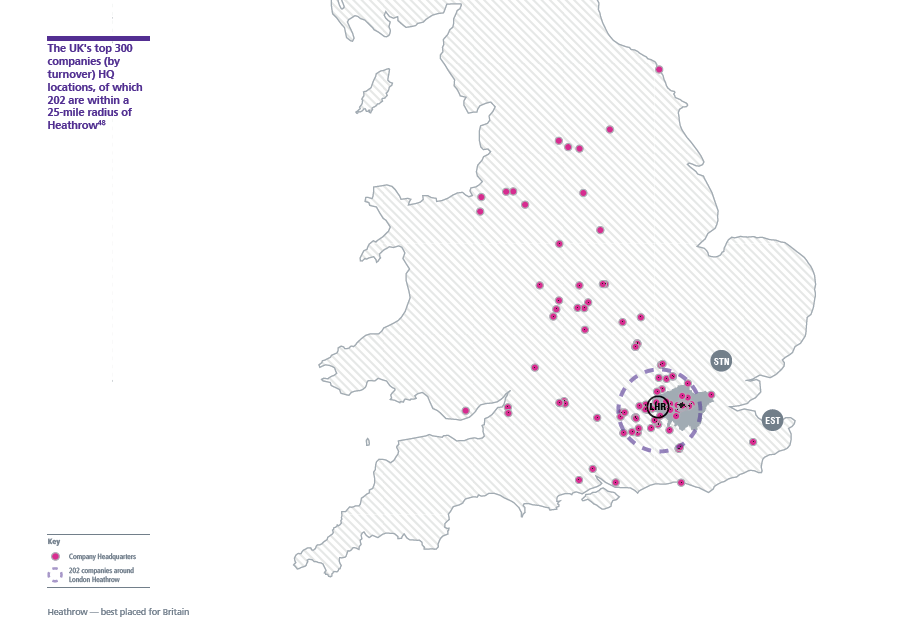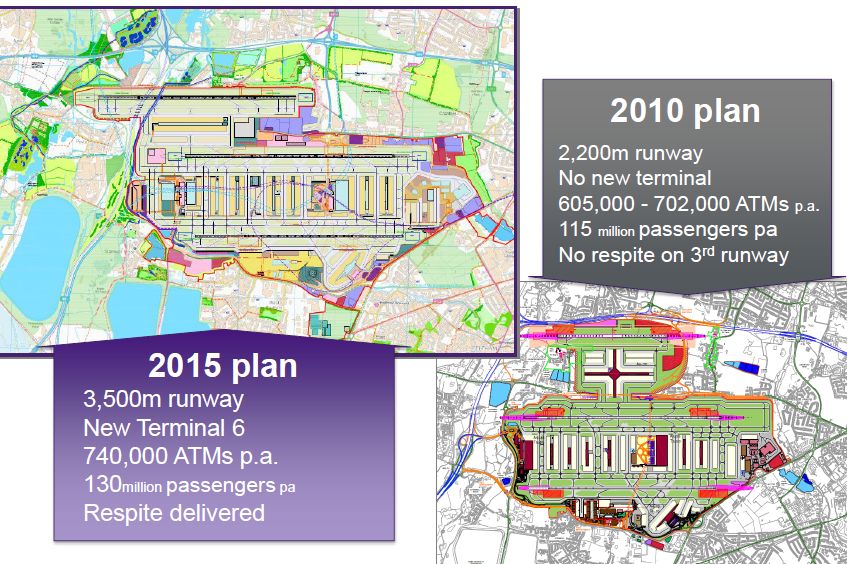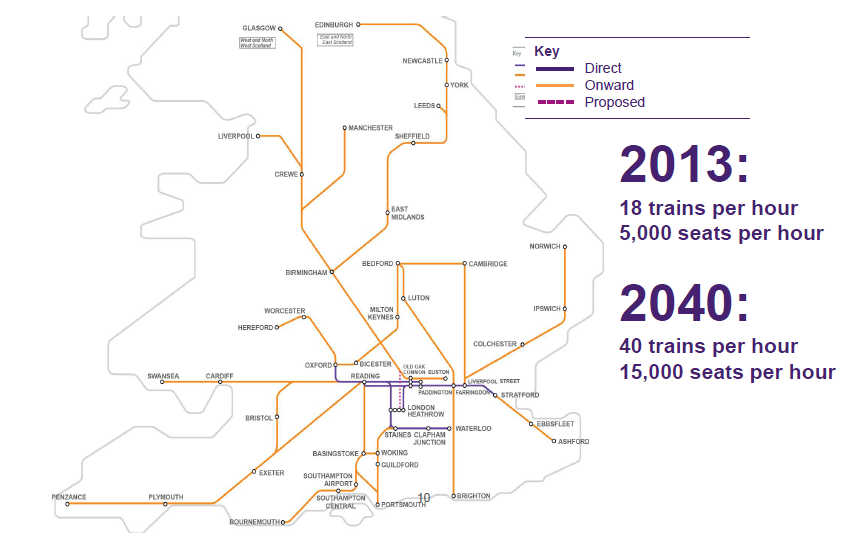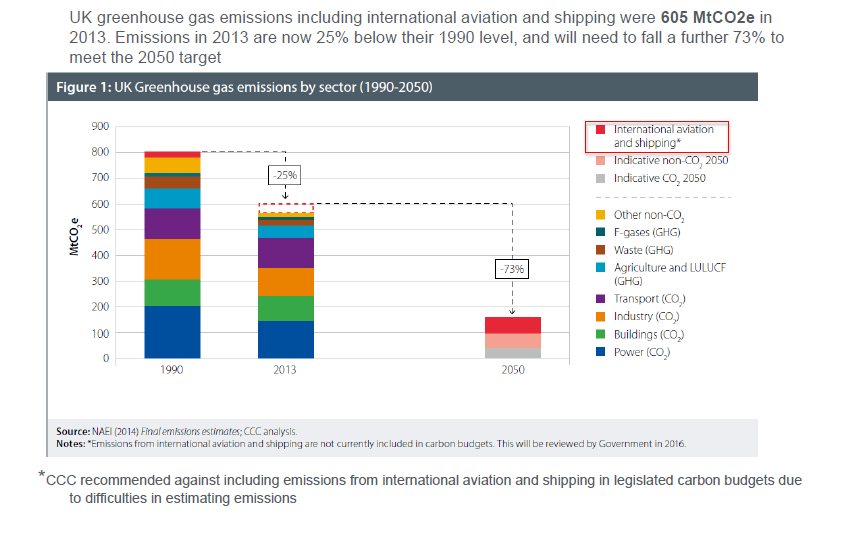For most of my life I have stood firmly against expansion of Heathrow airport, largely on the grounds of aviation’s impact on climate change.
As both a Councillor and Parliamentary candidate I committed to lie in front of bulldozers and joined the Heathrow Climate Camp, where I was the only elected politician to put up a tent! I also called for the Cranford Agreement, which was designed to protect the residents close to the eastern end of the northern runway from high noise levels, to be codified in law. Furthermore, in 2007 I was moved to take part in non-violent direct action as a protester interrupting a keynote speech at Chatham House by then MP and Secretary of State for Transport, Douglas Alexander.
However, in late 2012 my views changed on Heathrow expansion. As the debate reaches a critical juncture this autumn, I feel that now is the time to expand on the reasons why a significant shift in the debate – and a more dialogue-based approach from the operators of Heathrow – has led to my new outlook on this complex and tough decision facing our community.
The national debate has shifted from should we expand aviation? To where should we expand aviation?
The key milestone in my change of outlook was the announcement of the Davies Commission in September 2012. With the commission’s launch and despite the best efforts of the environmental movement, the national debate moved from not whether we should expand airports at all, but to where a new runway in the South East of England would be built?
Whilst the climate change impacts of aviation still give me huge cause for concern, as a West Londoner I think we would be mad to give up the economic advantage that Heathrow offers, particularly given the changes Heathrow have now made to their proposals. I say this despite living directly under the flight path and suffering the 4.30am aircraft wake-up calls!
West London’s economic strength is intrinsically tied to Heathrow and its leading international position
We would be naive to think that our quality of life in terms of factors such as good quality jobs and high levels of employment is not linked to Heathrow airport. As a nation we need to think carefully about whether directing investment towards Gatwick, rather than ensuring Heathrow remains a world-class airport, would risk a number of major employers taking the opportunity to simply relocate their headquarters outside the UK. From the conversations I have with senior business leaders I am in no doubt that this is a very real danger.
Mothballed company HQs would be disastrous environmentally, socially and economically. It took some 20 years for the EMI factory at Hayes to find a new lease of life as The Old Vinyl Factory. Some 202 of the top 300 companies in the UK are clustered within 25 miles of Heathrow, compared to only seven around Stansted and two around the Thames Estuary. In total we have 60% more international companies in the area around Heathrow than in the rest of the UK, as firms that rely on international long-haul flights choose to locate themselves around Heathrow. Not surprisingly, the economy around Heathrow reflects some 60 years of investment by these firms.
International trade
Heathrow suggest their proposals will enable 40 new long-haul destinations to be introduced. At a time when the UK economy is still struggling to recover from recession giving business people easier access to new global markets would be a really helpful economic driver. Nevertheless my one caveat to this is that we need to be smarter about how we use this capacity. Placing capacity constraints on Heathrow is economically and carbon inefficient on the basis that direct flights to destinations, providing the seats are fully utilised, are lower impact.
However, none of the arguments above for expanding Heathrow, rather than Gatwick, is to say that the climate change and other environmental impacts including air quality, CO2 emissions and noise, and it is essential that the aviation industry maintains an unrelenting focus on these areas. If these key issues are not addressed meaningfully, then West Londoners’ quality of life will slide backwards and suburban living and working will become less and less appealing, which will create its own problems for our community.
How are Heathrow proposing to mitigate their impacts?
2010 v 2015 proposals
Heathrow’s 2015 proposals have changed significantly from those put forward in 2010 to try and reduce the impact of expansion on our local communities. The Airports Commission’s final report recognises this, stating that the 2015 proposals are ‘a radically different plan from any previous proposals’.
On the face of it, the 2015 proposals might look like a scheme with greater impact. However, this is a more carefully considered set of plans that is designed to respond to the feedback from local consultations regarding the key issues of noise, air quality, transport network capacity and carbon emissions.
Noise
After sustained campaigning by the local community and more dialogue, Heathrow has put together a fairer deal than previously for those home-owners that would have to move as a result of expansion and those of us that would continue to experience significant noise.
Published in June 2015, Heathrow’s Blueprint for noise reduction sets out the airport’s top ten priorities for action on noise on areas which include the early phase-out of the noisiest planes, quieter approaches and better distribution of night time landing noise, as well as bigger fines for noisy departures.
Air quality
The Heathrow debate has been subject to some rather muddled arguments from politicians regarding the Airports Commission’s consultation on air quality and the validity of data collected from monitoring sites located next to the airport and its contribution to London’s pollution crisis. The reality is that the monitoring sites located further away from the airport are failing to meet EU limits, and this is due to a variety of factors.
Data from the Hillingdon and Hayes air quality monitoring stations further away from the airport shows that air quality readings based on an annual average are breaching EU limits. At Hillingdon the airport contributes 16% of emissions, and at Hayes it is 6%. As can be seen in the charts, at both these locations, after background contribution, it is non-airport related traffic which is the most significant emissions source.

Heathrow is doing a lot to address emissions from the airport-related activity as set out in their blueprint for reducing emissions . These measures, along with the mitigations to reduce emissions through the design of the expanded airport, demonstrate how the airport can expand and remain within pollution limits. In addition, the Airport Commission concluded that the Heathrow North West Runway proposal would have a Nitrogen dioxide metric of 34.7 micrograms per cubic meter, below the EU air quality limit of 40.
Transport network capacity
As I set out above, surface transport is the most significant factor affecting local air quality in the Heathrow Area. In recognition of this, Heathrow has developed a strategy that will transform rail connectivity in all directions. This aims to help ensure that the majority of passengers use public transport at the expanded airport. In addition, major projects such as Crossrail will deliver improved connectivity through West London with more trains and faster journey times. With its strategy in place the airport believes there could be as many as 40 trains per hour, equating to a train every 90 seconds, with an increase in capacity from 5,000 seats per hour today to almost 15,000 seats per hour by 2040. I have no doubt that most West Londoners would like to see this investment happen even faster!
With its Heathrow Commuter programme the airport has successfully reduced the number of airport workers who travel by car over the last 20-25 years. The programme includes the world’s largest single site car share scheme, Heathrow Cycle Hub and a wide range of discounted travel products to support use of public transport. This and other investment in sustainable transport will help the airport to deliver on its commitment to deliver expansion without increasing its contribution to traffic on the road network, an important factor in meeting the challenge of meeting air quality limits.
To reduce Heathrow’s air quality impact through the transport activity the airport generates even more may be required. Perhaps we will need to see London’s Low Emission Zone (LEZ) expanded to include the airport?
Carbon emissions
The figure below from the the Committee on Climate Change’s progress report to parliament in July 2014 shows how the contribution of different sectors to the UK’s CO2 emissions has shifted between 1990 and 2013. Fortunately for Heathrow, the aviation sector and their customers, aviation is forecast to get a significant share of the UK’s CO2 budget in 2050, even after taking technological innovations into account. It takes a lot to get us sky-borne.
Sustainable Aviation’s roadmap published in December 2014 sets out how the sector believes it can expand whilst remaining within the UK’s international commitments on carbon reduction. This will be achieved through a combination of high carbon trading and offset; the use of sustainable fuel such as from waste and fuel-burn reduction through a more efficient aircraft fleet.
Are all these actions sufficient for the scale of the challenge?
As I have reflected again in recent weeks, as I take on my new role as Chief Executive of West London Business where my team will develop our work on environmental sustainability in the months ahead, realising the ambitious plans of Heathrow and the wider aviation sector for a more sustainable business model will only be achieved through partnership and some healthy competition to find solutions. With the right combination of collaboration and competition we can but hope we are successful in getting better at protecting the planet we pass onto the next generation.
As for practical steps to support the transition and make sure that Heathrow delivers on its commitments I would like to suggest the following measures:
- Sustainable Aviation and Heathrow’s corporate responsibility initiatives must be open to external scrutiny and robust audit on an annual basis. The toughest international standards from the Global Reporting Initiative to independent verification of reports must be in place to help ensure that annual targets are achieved.
- The right incentives for the technical innovation that reduced CO2 emissions requires must be put in place by government and industry.
- Families and individuals’ homes impacted by the proposals, Harmondsworth most significantly, should be supported by local leaders and the airport in exploring a full range of options to assist in what will sadly for some be a traumatic experience. In fact a dedicated team should be put in place to provide support. It is important to reminder that some residents, I suspect, will be delighted at the compensation package and opportunity to relocate.
In West London I hope our business community can do far more in the years ahead with the Ellen McArthur Foundation, leveraging their insights into designing a Circular Economy. This may also see us start to draw more on the visionary work by Andrew Simms in ‘Collision Course’ which encouraged us to start to think more strategically as to where and how the production and distribution of goods, as well as their supply, is best organised.

The bottom line of course is that whatever capacity we have in airports such as Heathrow we need to make the smartest, most efficient use of what is a finite resource to drive our economy forward.









